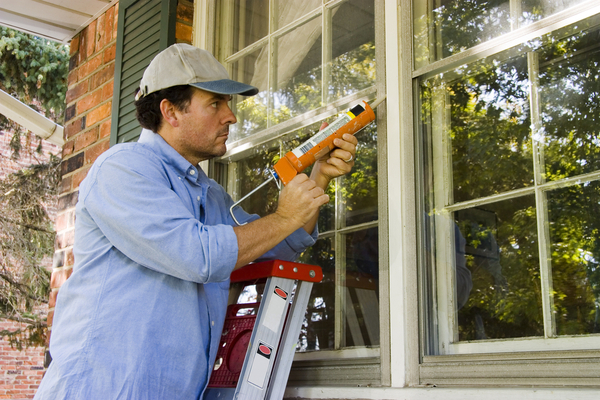Now is a great time to tackle all of the outdoor and indoor home improvements by sealing up all of those cracks and gaps that will cost you valuable energy dollars. If left to be drafty those small spaces add up to a 4′ x 4′ hole in the side of your house, so spend a few bucks wisely on supplies and potentially save hundreds of dollars this season.
Indoors: Start by checking the exterior walls of the house by feeling around all of the windows and doors for drafts. If you are having a hard time locating those drafts, light a stick of incense and hold it by the window and door frame. If the smoke is wavering, you may have an air leak. The size, shape, and location of the air leak will dictate how it is to be filled. If the leak is around a door or window frame, the best sealant is a paintable latex caulk. It will give a smooth and clean seal that will best blend into the surrounding areas.
Exterior wall outlets can also be a huge source of air leaks that need to be addressed. Remove all of the outlet covers on the exterior walls, place a pre-cut foam gasket on the back side and replace the cover. This will give you a nice tight seal and stop the air from coming in and out. If there is a large open void around the receptacle, you can fill those in with expandable foam.
If you find air leaks around the windows but notice it is coming in where the window moves up and down within the sash, you have the option of temporarily sealing that window shut for the season to stop that draft. Look for temporary caulk that’s removable and will seal that window closed for the season. Just make sure not to seal all windows shut in the event one needs to be used as an egress during an emergency.
While checking around your doors, make sure that they close securely to keep air from escaping. If you find them to be drafty, foam weather stripping can create a tight seal. While you are at your door, grab some WD-40 and lubricate the hinges to ensure smooth operation and avoid rust. You can also put some WD-40 on your key and insert it into the chamber to make sure the mechanism does not bind from the approaching chill.
Outdoors: Same thing goes for the outside of your house. Check around windows and doors to make sure that the caulk around the frame work has not dried and become cracked. If it appears worse for the wear, remove the old caulk with a blade or a caulk softener and then spray the opening with bleach and water solution to kill any mold that might be growing back there. Let the area dry thoroughly and reapply a paintable latex caulk. If you notice any space on the exterior that might accommodate pests or air leaks, filling those with expandable foam is a smart option because it will expand to fill the exact shape and size of the opening, its water proof, and darn fun to use.
And finally, be sure to call your heating provider and arrange for your seasonal maintenance of the heating and cooling system. Try and schedule the appointment before they get busy working on emergencies. Having the system maintained will not only have the entire system operating efficiently, but a smooth running system will save energy dollars. If you haven’t done so already, sign up for your heating provider’s service plan; a minimal annual fee could save major bucks in the event of an emergency repair.
—
Photo Credit: Greg McGill / Shutterstock.com
